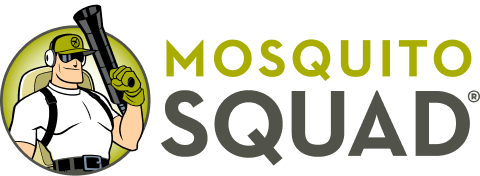
CDC Alert: Eastern equine encephalitis (EEE) has a fatality rate of 30%. Learn more about EEE and contact your local Mosquito Squad for mosquito and pest control treatments.

Call Today!
(717) 527-7713Outdoor Spotted Lanternfly Control Services
Are you dealing with swarms of the spotted lanternfly (SLF)? You’re not alone. This flying insect has become prevalent and can cause severe damage, including oozing sap, wilting, and leaf curling, to trees and other plant life. These developments are astonishing as SLF was only just discovered in 2014. Since then, this species has spread to various parts of the country and has been classified as a threat due to at least $324 million lost annually in agricultural production. The good news is that SLF is not dangerous to humans or other animals and has not been known to bite or sting.
What Do Spotted Lanternflies Do:
Our team at Mosquito Squad wants to help you eliminate these invasive insects and protect your thriving plant life.
Call us at (717) 527-7713 to determine how we can support you in controlling SLF if they’ve taken up residence in your yard.
When Do Spotted Lanternfly Eggs Hatch?
SLF lay up to 30-50 eggs in fall, and the first nymphs start to hatch between May and June. The best time to identify and eliminate the egg masses is in winter and early spring. You can find the eggs on tree trunks and branches. The egg masses may look like white or gray patches on tree bark.

When you find SLF’s egg masses, take a card you don’t mind getting dirty and press down on the eggs, scraping back and forth along the surface of the tree.
You’ll hear a soft popping sound and see liquid secretions, meaning you’re completely killing the nymphs for next year.
Press hard with your card to get all of the nymph egg masses; otherwise, they could still be viable and reach maturity.
Pour 1/3 cup of Isopropyl Alcohol into a freezer or sandwich bag, or container.
Taking your card—and making sure your bag of rubbing alcohol is open—scrape the egg mass off the tree’s trunk into the bag.
Swish the bag around, ensuring the egg mass is submerged in the alcohol, immediately killing any growing nymphs.
Discard the bag by placing it in a larger disposal bag and throwing it in the trash.
Note that while mashing the egg masses with a card to kill growing nymphs works well, rubbing alcohol is the most effective method for getting rid of SLF.
To identify these flying insects, it’s essential to understand their growth cycle. SLF go through four growth stages, and in the first three stages, they are unable to fly.
What Does a Spotted Lanternfly Look Like?

Young nymphs in the second and third stages of growth are black with bright white spots.
In the fourth growth stage, right before adulthood, they are vibrant red with black and white spots.
Adults have distinct gray wings with black spots on them.
Unfortunately, no. These flying insects are widespread and invading many parts of the country. While you can’t keep them permanently out of your yard, you can remove them from your outdoor space. The best way to eliminate these pests is to kill them at the source. If you see an egg mass, make sure to use rubbing alcohol to destroy it immediately.
Researchers are still working to identify which trees and plant life SLF are most attracted to. However, according to Penn State researchers, these insects have only been seen on sapling trees, sumac, grapevines, and tree-of-heaven. There is no evidence that ornamental trees, such as Fir Christmas trees, have been affected by SLF.
Even though SLF numbers are steadily rising, mosquito and tick control professionals like Mosquito Squad are using everything in our arsenal to help you take back your outdoor space. With our EPA registered products, we can support your home and ensure SLF isn’t an issue for you and your family any longer.
For more questions about dealing with the SLF population, call us at (717) 527-7713. We can also set up an appointment to eliminate other flying pests in your backyard today!
bugs-pests
Find your local squad
If you are not fully satisfied with your Mosquito Control or Misting System, contact your Mosquito Squad office and we will make it right!
About Our Guarantee